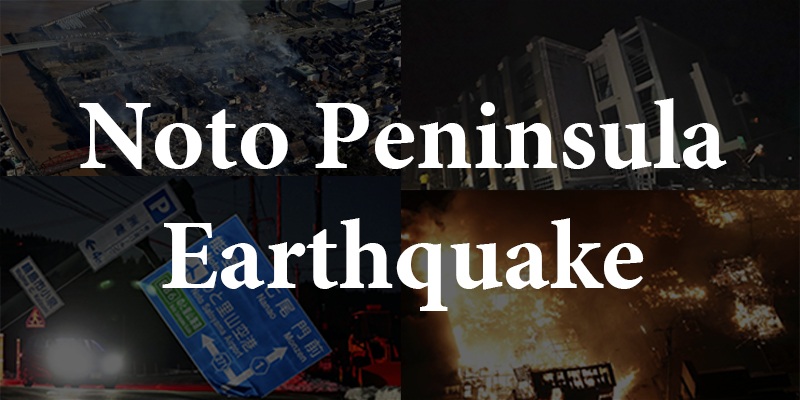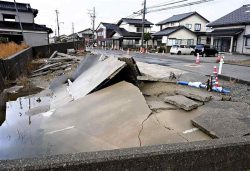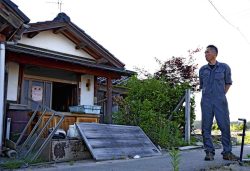Kobe-based Broadcaster Issued Multi-language Tsunami Evacuation; Praised for Delivering Info Regardless of Nationality
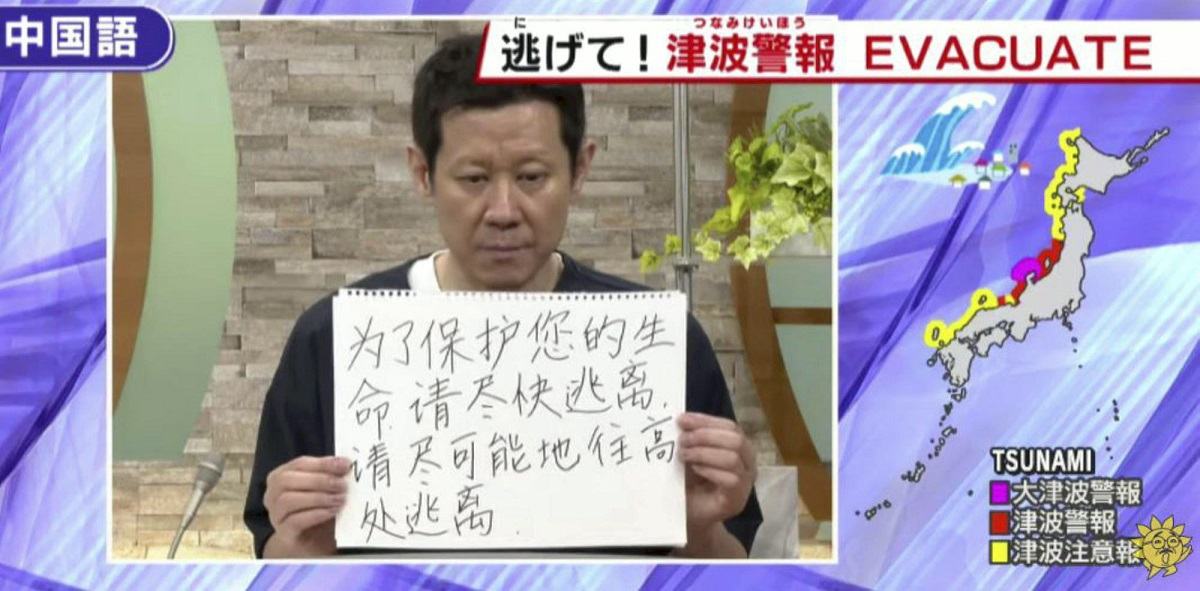
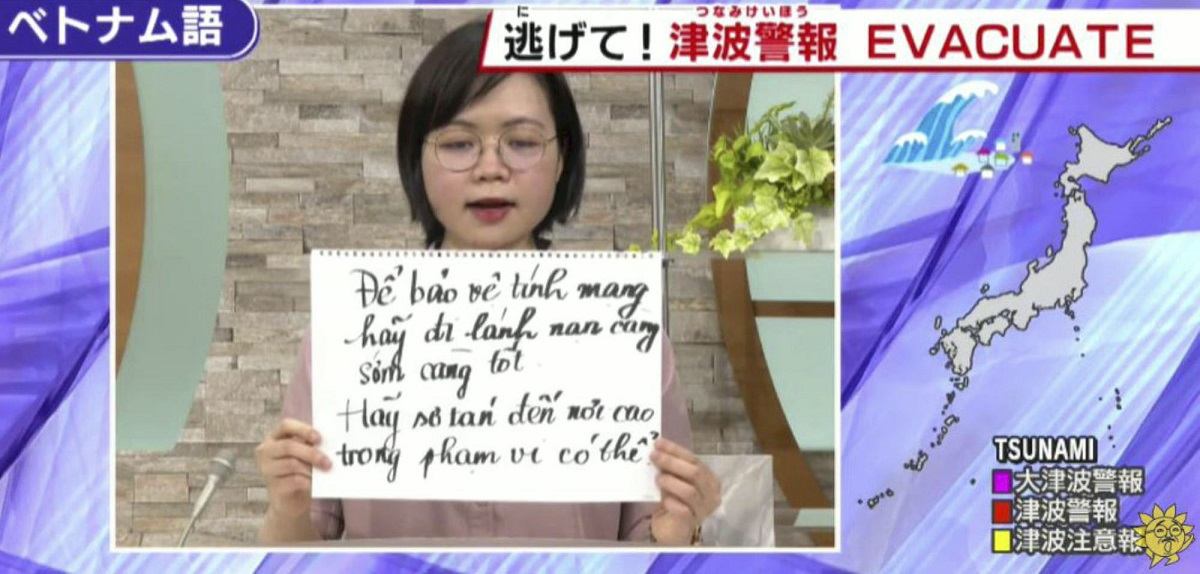
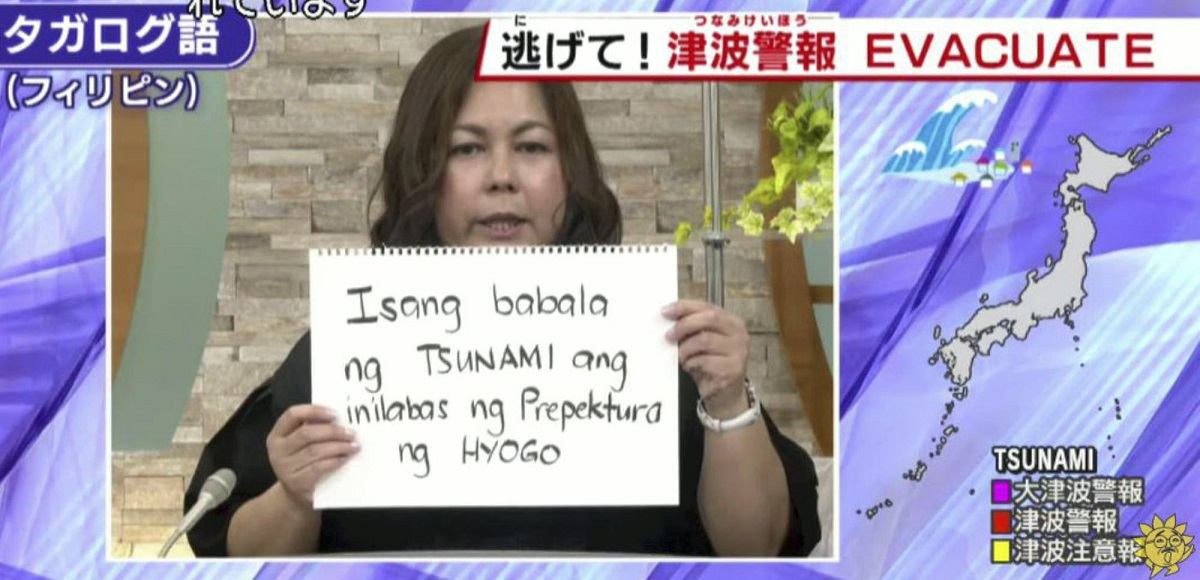
Tsunami evacuation warnings are written in Chinese, Vietnamese and Tagalog on whiteboards.
16:08 JST, January 14, 2024
A broadcaster that issued a multi-language tsunami evacuation in the wake of the Noto Peninsula Earthquake has drawn attention as its method supports those who are vulnerable to disasters due to their difficulty understanding Japanese. Sun Television, a Kobe-based broadcaster operating in Hyogo Prefecture, called for tsunami evacuation in eight different languages following the Jan. 1 quake.
The idea came from an employee who experienced both the Great Hanshin Earthquake in 1995 and the 2011 Great East Japan Earthquake and prepared to deliver accurate information to all viewers regardless of their nationalities.
“A disaster can happen at any time. We would like to help save as many lives as possible,” said a spokesperson from the company.
In the wake of the Jan. 1 temblor that registered the maximum of 7 on the Japanese seismic intensity scale, a major tsunami warning was issued for Ishikawa Prefecture. Another tsunami warning was issued for northern Hyogo Prefecture at 4:22 p.m., about 10 minutes after the earthquake.
Though the broadcaster was airing a New Year’s special at that time, it switched at around 4:30 p.m. to a pre-recorded 6-minute video in which a male announcer urged viewers in Japanese to evacuate to higher ground as soon as possible to protect their lives. Following the Japanese announcement, English, Korean, Chinese, Vietnamese, Nepali, Tagalog and Portuguese speakers appeared one by one and repeated the same content in the respective languages.
The video took into consideration those with hearing difficulties by showing whiteboards with the same information written in each language. Tsunami of up to 40 centimeters were observed in Toyooka, Hyogo Prefecture, at 7:20 p.m., about three hours after the issuance of the tsunami warning.
Many viewers posted comments praising the broadcaster on social media, with some saying things like, “Only a local broadcaster that experienced a massive earthquake could do this.” The broadcaster also received words of gratitude, including one that said: “A foreign acquaintance of mine was able to understand the situation and be level-headed thanks to the broadcast.”
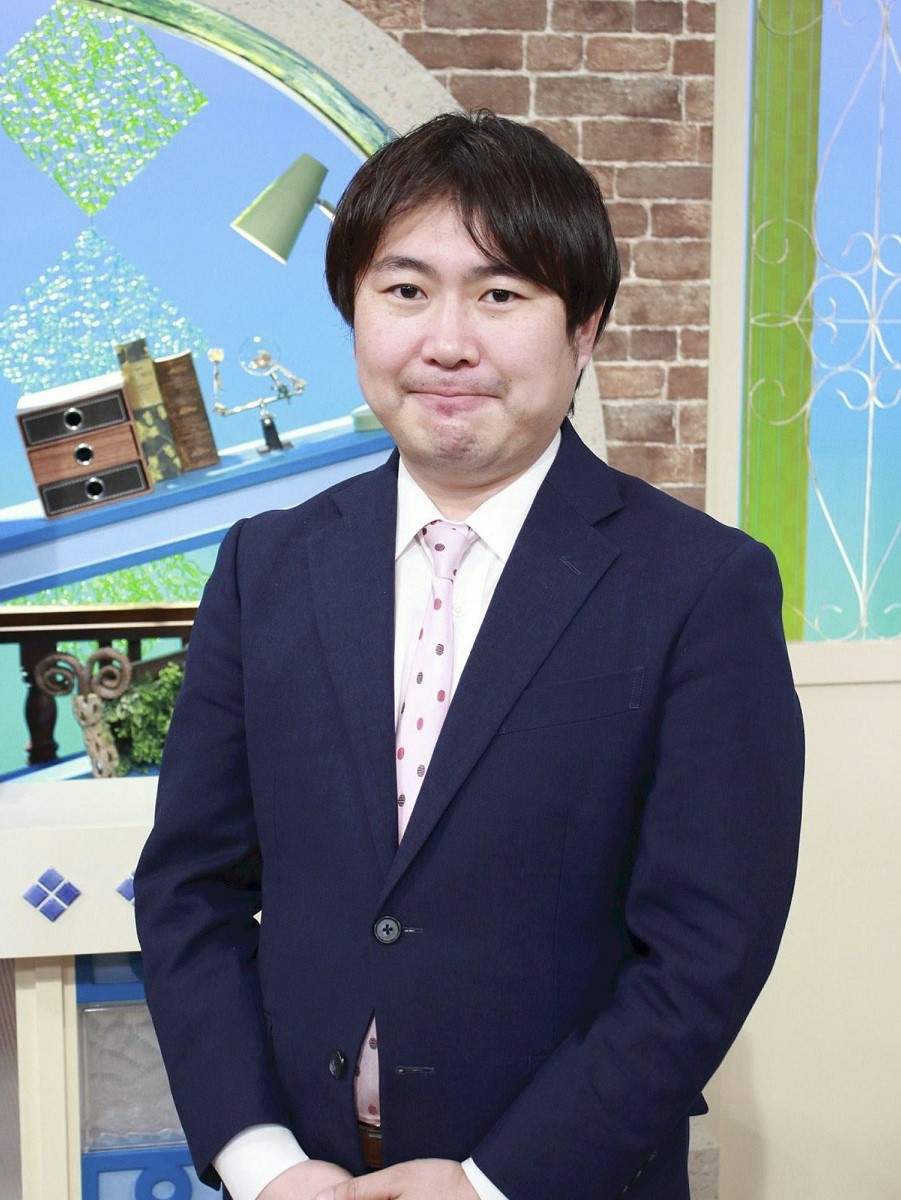
Yuki Fujioka
Broadcasting the pre-recorded video was the idea of Yuki Fujioka, 39, a newscaster at the station. When the Great Hanshin Earthquake occurred, residents who had roots outside Japan, including Vietnamese people living in Kobe, were also affected by the disaster. They were anxious about the situation since they did not understand Japanese and were unable to receive relief supplies, which was later identified as an issue.
Fujioka was a fourth grader in elementary school when he experienced the Great Hanshin Earthquake. Hoping to contribute to disaster reporting, he joined the Aomori-based broadcaster Asahi Broadcasting Aomori. As an announcer, he urged residents to evacuate from tsunami immediately after the 2011 Great East Japan Earthquake. Fujioka joined Sun Television in 2015 and started to film a video that issued a tsunami evacuation warning. He cooperated with the multi-language radio station FMYY in Nagata Ward, Kobe, and completed the video in December 2023.
“Our readiness to deliver information to those who are difficult to reach is being tested now,” Fujioka said. “I would like to continue to prepare as much as I can.”
Related Tags
"Society" POPULAR ARTICLE
-

M4.9 Earthquake Hits Tokyo, Neighboring Prefectures
-

Israeli Tourists Refused Accommodation at Hotel in Japan’s Nagano Pref., Prompting Protest by Israeli Embassy and Probe by Prefecture
-

M7.5 Earthquake Hits Northern Japan; Tsunami Waves Observed in Hokkaido, Aomori and Iwate Prefectures
-

Tsukiji Market Urges Tourists to Avoid Visiting in Year-End
-

M5.7 Earthquake Hits Japan’s Kumamoto Pref., Measuring Upper 5 Intensity, No Tsunami Expected
JN ACCESS RANKING
-

Tokyo Economic Security Forum to Hold Inaugural Meeting Amid Tense Global Environment
-

Keidanren Chairman Yoshinobu Tsutsui Visits Kashiwazaki-Kariwa Nuclear Power Plant; Inspects New Emergency Safety System
-

Imports of Rare Earths from China Facing Delays, May Be Caused by Deterioration of Japan-China Relations
-

University of Tokyo Professor Discusses Japanese Economic Security in Interview Ahead of Forum
-

Japan Pulls out of Vietnam Nuclear Project, Complicating Hanoi’s Power Plans
